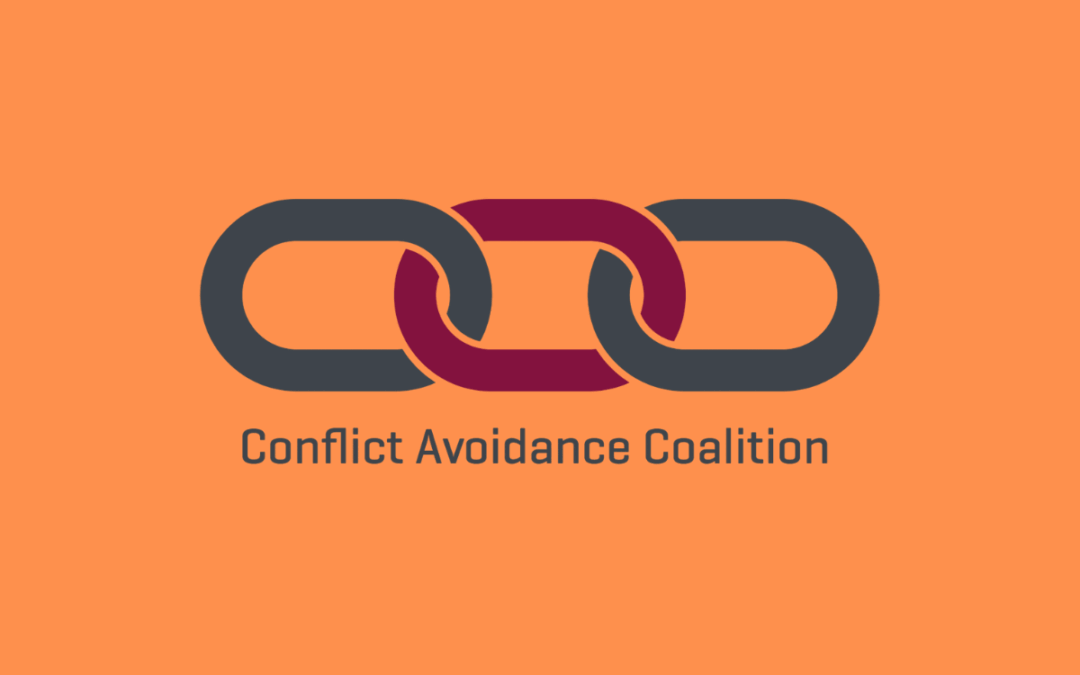
by Oscar Venus | 20 Jun, 2025 | Contractual and Legal, Drylining, Insurance
Finishes and Interiors Sector (FIS) is taking a stand against poor behaviour in the supply chain. Members working in the housebuilding sector have raised concerns about unfair snagging practices on plaster or tape and jointed walls where LED lights are being used at shallow angles to inspect the finish.
This improper practice whereby the light is shined close to, or directly against the surface of the wall, highlights surface imperfections which are normally imperceptible to the human eye well within tolerance when industry-standard inspection methods are used.
On launching the campaign, Iain McIlwee, FIS Chief Executive stated: “We often talk about the culture of construction and that means we need to look at all behaviours and the effect they have. It is clear to us that this over-zealous approach to inspection is creating a lot of bad feeling and straining relationships. Our belief is that the practice has little to do with quality and everything to do with keeping pressure on the supply chain, making sure sub-contractors are operating under commercial tension. In the worst of cases it is being used to delay, reduce or withhold payment and with that all the cashflow and mental health issues that plague SMEs in the supply chain. Sometimes problems can be put down to people not understanding the standards and techniques, but in reality, it is often little more than bullying behaviours and has no place in the sector today.”
To tackle the problem head-on, FIS has published new guidance which members are encouraged to download and share with their clients ahead of starting work. This guidance covers how inspections should be conducted and encourages the classification of the flatness of the plastered finish is agreed along with the level of smooth finishes before work starts.
FIS Head of Technical James Parlour said: “Over the years we’ve tried attacking this problem from purely a technical perspective, but frustratingly people continue to ignore the standards. Change won’t happen unless we put our heads above the parapet and start to call out bad behaviour. This latest guidance and supporting resources should help align expectations and inspections to the standards and ensure that we avoid glancing light issues in inspection which exaggerate even the smallest of imperfections.
We do appreciate that it can be difficult for individual members to do this directly, but we are also asking members to report to us when they encounter these bad practices and we can pick it up as a collective effort.
So the message is clear, if you are inspecting drylining and plaster finishes, refer to the standards and ensure that your processes are informed, fair and realistic. If you are a specialist contractor and have experienced unfair snagging practices, don’t just put up with it and move on reach out to us in confidence so we can log cases and start to challenge businesses to improve”.
Beyond site tension FIS is also concerned the effect bad practices have on those looking to start a career in the sector. Young people are being encouraged into the industry but when they are faced with this culture and ruthless nature many leave before they have had chance to really see what a good career the construction industry can offer. We need to create a better culture on site to attract and retain the people we need.
To support the campaign FIS will be launching a short video to help showcase the problem and is develop new training to support inspections. You can register on the FIS website to receive free access to the training when it is launched later this summer.
For more information and to keep an eye on developments visit the FIS Shine a Light Campaign page here.
To report your experiences, email details in confidence to info@thefis.org or call 0121 707 0077.

by Clair Mooney | 12 Jun, 2025 | Contractual and Legal
The Conflict Avoidance Coalition has announced the appointment of Richard Bayfield, Vice President of the Institution of Civil Engineers (ICE), as its new Chair. A seasoned professional in construction and engineering, Richard brings decades of expertise to this leadership role.
Established in 2018, the Coalition now comprises around 90 of the UK’s leading professional and industry bodies, including FIS as a Bronze signatory. Its mission is to reduce the financial and relational costs of disputes in construction and engineering by promoting collaborative practices and encouraging widespread adoption of the Conflict Avoidance Pledge.
In his first weeks as Chair, Richard has formed a new steering group to coordinate delivery of the Coalition’s aims and has introduced a written constitution to provide a strong governance framework. These steps mark a renewed phase of activity and impact for the Coalition. Former Chair, Len Bunton, has taken the new role of President of the Coalition
Speaking on the New President, Richard Bayfield said:
“In his former role as Chair Len Bunton has been a tireless advocate for positive change in the industry. Indeed, Len has managed to enthuse a significant array of organisations into joining the coalition. The Steering Group was unanimous in awarding Len the role of President upon his leaving the Chair’s role.
Speaking on his appointment, Richard Bayfield said:
“Conflict Avoidance Processes (CAP) anticipate that conflict is inevitable in any situation involving human activity. Often, small problems are hidden and eventually grow to become too big for the project team to resolve. Decisions are then escalated to a third party such as a judge or adjudicator, at great financial and relational cost to the parties. CAP avoids such risks.”
Martin Burns, RICS representative on the Coalition, welcomed Richard’s appointment:
“Richard has immense knowledge and experience in construction and engineering dispute resolution. His appointment as Chair adds to the Coalition’s status and its growing influence on how employers and suppliers behave towards each other in an industry that has often been damaged by unnecessary disputes.”
In a further development, the Coalition has also launched its new website. Designed as a user-friendly platform, the website will make it easier than ever for businesses and organisations to adopt the Conflict Avoidance Pledge. The new website is a hub for conflict avoidance professionals, providing practical tools and resources to help organisations embed proactive dispute management processes. Visitors to the site are also invited to submit their own conflict avoidance news and events for hosting on the website.
For more information and updates on the website launch, visit conflictavoidance.org.
Steering Group Members
Len Bunton (President)
Richard Bayfield (Chair)
Jeremy Glover (Vice Chair)
Ed Schryver (Vice Chair)
Ian McIlwee (Treasurer)
Sue Barrett
Ashley Belcher
Stephen Blakey
Martin Burns
Julie Forsyth
Ysella Jago
Jim McCluskey

by Clair Mooney | 29 May, 2025 | Building Safety Act, Contractual and Legal, Legal cases, Main News Feed
On 21 May 2025 the Supreme Court handed down Judgment in the case of URS Corporation Ltd -v- BDW Trading Ltd [2025] UKSC 21.
This Judgment is perhaps one of the most significant since the Building Safety Act came into force as it starts to give us an indication of how Developers claims are going to impact the wider market. The case addressed important issues such as:
(1) the scope of duty and the recoverability of loss in negligence;
(2) limitation periods under section 135 of the Building Safety Act 2022 (BSA);
(3) whether section 1(1)(a) of the Defective Premises Act (DPA) applies to developers; and
(4) whether a judgment or settlement is required to enable a party to bring a contribution claim under the Civil Liability (Contribution) Act 1978 (Contribution Act).
The facts
BDW is a major property developer and includes Barratt Homes and David Wilson Homes. URS, was engaged by BDW to act as a structural design consultant in connection with multiple high-rise residential developments which completed some considerable time ago. In the aftermath of the Grenfell Tower tragedy BDW reviewed its portfolio. Two of its high-rise residential developments contained design defects.
Even though BDW had disposed of its interest and sold the developments, in 2020 and 2021 BDW undertook remedial works to the properties at significant cost. At this stage no claim was made against BDW by any third party and in any event, at the time, any such claims would have been time barred.
In March 2020, BDW brought a defects claim against URS to recover its losses. BDW successfully amended the claim in June 2022 following the coming into force of the BSA which retrospectively extended the limitation period for claims under section 1 of the DPA from 6 to 30 years. The case ended up the Supreme Court where Seven Justices of the Supreme Court heard 4 grounds of appeal in December 2024:
Decision
All four grounds the Court found in favour of BDW (URS’s appeals were dismissed):
| Ground 1 |
Is loss that is otherwise recoverable in the tort of negligence irrecoverable if it is incurred (i) without an enforceable legal obligation to do so, and (ii) in respect of property in which the claimant has no proprietary interest, because such loss is voluntarily incurred, and that means it falls outside the scope of the defendant’s duty of care and/or is too remote?
No. There is no rule of law which means that the voluntary carrying out of the repairs by BDW render the repair costs (1) outside the scope of the duty of care owed or (2) too remote. Whether these costs were recoverable is a question of fact and depends on legal issues of causation and mitigation which will be assessed when considering liability. The effect of this is that developers who incur costs to remedy building safety defects, even in the absence of a claim from a third party, may be able to recover these costs from the negligent builder or designer.
|
| Ground 2 |
Does section 135 of the BSA (extended limitation period) apply in the present circumstances and, if so, what is its effect?
Yes. Section 135(3) BSA applies to claims which are dependent on s.1 DPA. To make a claim, a developer would need to establish that it applies to actions arising out of a liability that is dependent on section 1 of the DPA even though it is not an action brought under section 1 of the DPA. Such actions are clearly “in respect of damage or defects in relation to buildings”. The Supreme Court said the alternative would undermine the purpose of the BSA i.e. to ensure those responsible for historic building safety defects are held to account.
There is a possible sting in the tail for developers or other relevant claimants seeking to recover losses incurred despite the existence of a potential limitation defence. This is because section 135 (3) BSA does not retrospectively affect the answer to the questions of causation, mitigation and remoteness which determine whether a developer can recover compensation from a negligent designer or contractor for the cost of remedial work carried out before June 2022. This will be a matter to be addressed when considering liability.
|
| Ground 3 |
Does section 1(1)(a) of the DPA also apply to property developers?
Yes. The Supreme Court have said that there is no reason why a developer cannot both owe a duty and be a owed a duty, particularly where the developer is the first owner.
|
| Ground 4 |
Is BDW entitled to bring a contribution claim against the URS under section 1 of the Contribution Act when there has been no judgment or settlement between BDW and any third party and no third party has ever asserted any claim against BDW?
Yes. The Supreme Court held that the right to contribution arises when: (i) damage has been suffered by C for which D1 and D2 are each liable; and (ii) D1 has paid or been ordered or agreed to pay compensation for the damage to C. On the facts, BDW paid compensation (in kind) for the damage suffered by the homeowners by carrying out the repairs. The fact that there has been no judgment against the developer or admission of liability or settlement between it and any of the homeowners, nor any claim, does not prevent the claim for contribution.
|
It is worth noting too that, as intervener, the government made written submissions relating to the background to the BSA, the structure of the BSA and the policy and purpose underlying the BSA in general and section 135 in particular. These submissions were very much supportive of BDW’s case.
The consequences
The Supreme Court has provided encouragement and motivation to developers to be proactive in carrying out repairs by clarifying the law and signifying that there are a host of options available to them to seek to recover those costs.
This gives “teeth” to the BSA and the policy underpinning the Act.
The Supreme Court’s decision will likely have a significant impact on historic claims for building safety defects. However, there are some wrinkles to be ironed out. Whilst the policy behind the decision may be clear, some of the legal issues remain complex and nuanced and the effect of this judgment will be subject to further debate and discussion and clarification by the court and for future cases to involve arguments around causation and mitigation.
This article is an abridged version of an article originally written by FIS Legal Advisors Hill Dickinson, the full article can be seen here.

by Oscar Venus | 9 May, 2025 | Contractual and Legal
With recent figures revealing that the construction industry experienced the highest number of insolvencies over the past year, the resilience of the supply chain remains a priority, and Build UK’s contract terms recommendation identifies six contract terms which should be avoided to promote collaboration and ensure a fair allocation of risk
- Fitness for Purpose – Do not include a ‘fitness for purpose’ standard of care for design (except in the process sector)
- Unquantifiable Risks – Do not include delay/loss and expense risk where not reasonably ascertainable for dealing with asbestos; fossils, antiquities and other objects of interest or value; unexploded ordnance; and the carrying out by statutory bodies of work in pursuance of their statutory obligations
- ‘Specified Perils’ – Do not include that ‘Specified Perils’ (as defined in JCT) will not give rise to extension of time where caused by the (sub-)contractor
- Breach of Contract – Do not include a blanket indemnity for breach of contract
- Uncapped Liabilities – Do not include uncapped (sub-)contractor liability (save for certain aggregate cap carve-outs)
- Performance Securities – Do not use a pure on-demand performance bond; a Parent Company Guarantee (PCG) which does not include a ‘no greater liability’ clause and equivalent rights of defence; or a collateral warranty which does not include a ‘no greater liability’ clause.
Build UK have published comprehensive guidance to help implement the recommendation, explaining why each term should not be used and setting out ways to manage the underlying issues more effectively, with specific guidance for JCT and NEC contracts. The recommendation is non‐binding and FIS members are free to negotiate their own contractual terms with their clients.

by Oscar Venus | 24 Apr, 2025 | Contractual and Legal
Working with renowned, and self-proclaimed recovering, construction lawyer Sarah Fox, FIS is running an interactive workshop on Wednesday 7th May, 1.30pm – 3.30pm with the aim of creating a simple sub-contract built on the 500 words principle. Sarah has spent 10 years putting her idea into practice and drafting UK construction contracts starting with just 500 words. This work very much aligns to FIS Responsible No Campaign and our wider work on improving contractual practice and procurement in the sector.
At the heart of her work is a simple idea – simplification works. When you streamline deals and clarify terms you’ll save time, improve relationships, and avoid conflict.
The workshop will be held online, is limited to 12 people and we will be using existing (more traditional) Standard Terms created through FIS as the base and the principles of the Conflict Avoidance Process and set down the in the “Best Practice Guide: Improving Management of Building Contracts” to support the process (both available via our legal and contractual toolkit here). We will also be using an Artificial Intelligence Tool, Genie AI, to support the process and help understand and assess the potential of new technology in the process.
If you want a bit more background on the 500 Words Principles, Sarah’s website is here 500 Words and she did a cracking Podcast here.

by Oscar Venus | 10 Apr, 2025 | Contractual and Legal
At FIS, we’ve long advocated for better contractual practices and early intervention to help our members avoid the stress, cost, and disruption of disputes. That’s why we’re proud to share that one of our trusted consultants, Len Bunton, has recently been appointed President of the Conflict Avoidance Coalition.
Many of you will know Len through his work delivering contract reviews and offering wise, practical advice to FIS members on a wide range of contractual issues. He continues to be a strong advocate for fairness and collaboration in construction contracts, and his latest message is simple but important:
All FIS members should sign the Conflict Avoidance Pledge. You can do so via the RICS website
What is the Conflict Avoidance Process?
The Conflict Avoidance Process (CAP) is designed to encourage early intervention when issues arise on a project—helping both parties find practical, collaborative resolutions before they escalate into formal disputes. It’s about protecting relationships, maintaining progress, and saving time and money.
We encourage members to go one step further and request that employers and main contractors include the Conflict Avoidance Clause in contracts. A sample clause is available and acts as a declaration of intent from both parties to resolve emerging issues constructively, without affecting their legal rights (including adjudication, if needed).
Why This Matters More Than Ever
With increasing pressure across the sector—particularly around payment terms and cash flow—contractual tensions can escalate quickly. Taking proactive steps now can help prevent those “bumpy rides” later on. By adopting the Conflict Avoidance Pledge and clause, you’re not only protecting your business but also supporting a wider industry shift towards fairer, more sustainable practices.
Need Support?
If you’d like to learn more or need help implementing this approach in your contracts, you can reach out directly to Len Bunton at len@buntonconsulting.co.uk.
FIS remains committed to helping members navigate the increasingly complex contractual landscape—and initiatives like this are a valuable step in the right direction.






